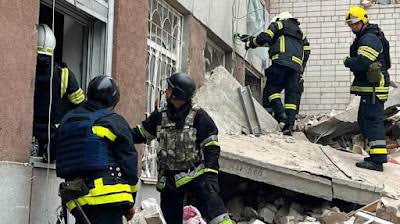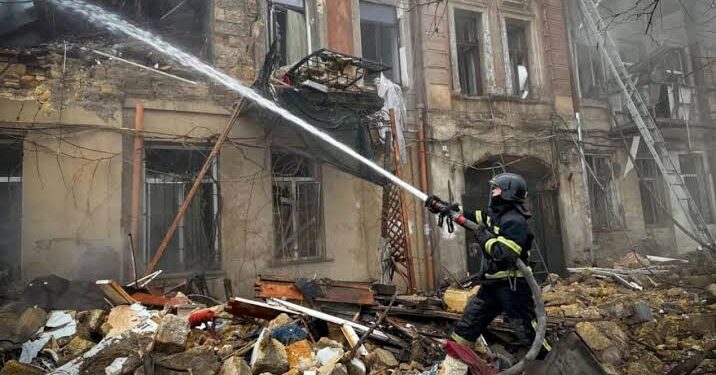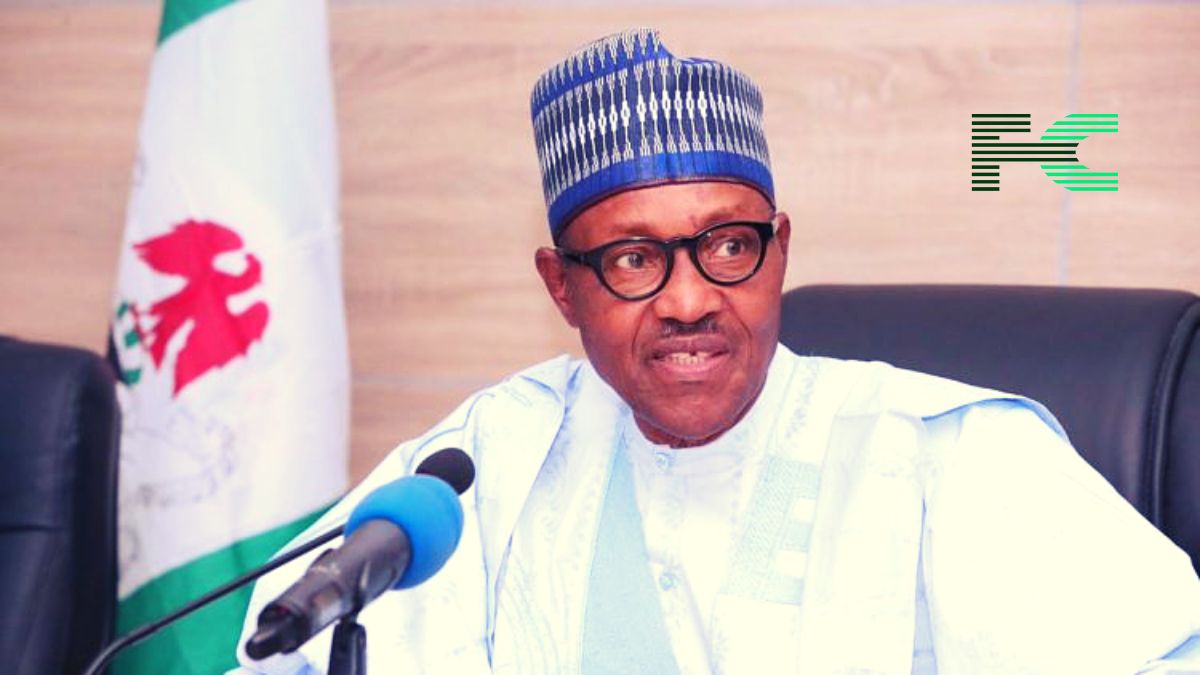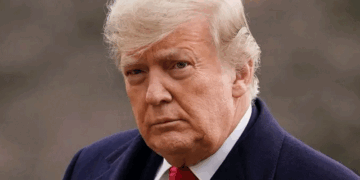Russia’s missile attack on a shopping mall and event complex in Kharkiv, a city in northeastern Ukraine on Sunday injured at least 47 people, including five children according to Ukrainian officials.
The attack occurred on the same day that Russia claimed Kyiv had launched one of the largest drone assaults against it since the full-scale war began, targeting power plants and an oil refinery.
Russian officials reported that air defense units had destroyed 158 drones launched by Ukraine overnight. Debris from these drones caused fires at the Moscow Oil Refinery and the Konakovo Power Station in the neighboring Tver region, although the full extent of the damage caused by the strike was not disclosed.
However, the missile strike in Kharkiv led to Ukrainian President Volodymyr Zelenskiy renewing his appeals for allies to permit Kyiv to use Western-supplied missiles deeper into Russian territory and reduce the military threat posed by Russia.

The ongoing fighting between Ukraine and Russia in strategic locations marks a critical juncture in the two-and-a-half-year conflict, that has Russia pressing an offensive in eastern Ukraine to establish its dominance while still trying to repel Ukrainian forces that breached its western border in a surprise incursion on August 6.
Escalating Airstrikes and the Impact on Civilians
Due to the recent incursion of Ukraine into Russian territory, the Kremlin has intensified its airstrikes against Ukraine, with last week seeing some of the heaviest bombardments of the war, including attacks on energy facilities and increased humanitarian crisis. However, Moscow denies targeting civilians but argues that damaging Ukraine’s energy infrastructure is a legitimate military objective. Russia’s drone and missile strikes have resulted in thousands of civilian casualties since the conflict began in February 2022.
However, Ukraine is not a slacker, Kyiv has intensified its its attack on Russia. With its rapidly growing domestic drone and missile industry, Ukraine has targeted and done damage to Russian energy, military, and transport infrastructure. While also still pressuring the United States and other allies for permission to use more powerful Western-supplied weapons to strike deeper into Russian territory and degrade Moscow’s ability to wage war. Ukraine’s threat to Russia and its dominance is exemplified by its increasing military strength and advancement now compared to when the war first started. However, Russia still tries to rein in Ukraine’s eagerness to destroy Russia by limiting the use of Western weapons within its territory through threats.
Concerns Over Western Weapons and Nuclear Doctrine
Although the bias is clear, Ukraine’s allies are still cautious in allowing Kyiv to use Western-supplied weapons inside Russia fearing that it might escalate the conflict. Russia’s TASS state news agency cited Deputy Foreign Minister Sergei Ryabkov as saying that Moscow might revise its nuclear doctrine in response to the West’s actions related to the conflict, though he did not specify what the changes would entail.
Russia’s current nuclear doctrine, established in a 2020 decree by Putin, states that nuclear weapons may be used in the event of a nuclear attack or a conventional attack that threatens the existence of the state. While Russia has previously suggested it is considering changes to this doctrine, Ryabkov’s comments indicate that such changes may be imminent.
Some Russian military analysts have called for a lowering of the threshold for nuclear use, arguing that this could “sober up” Russia’s adversaries in the West.

















